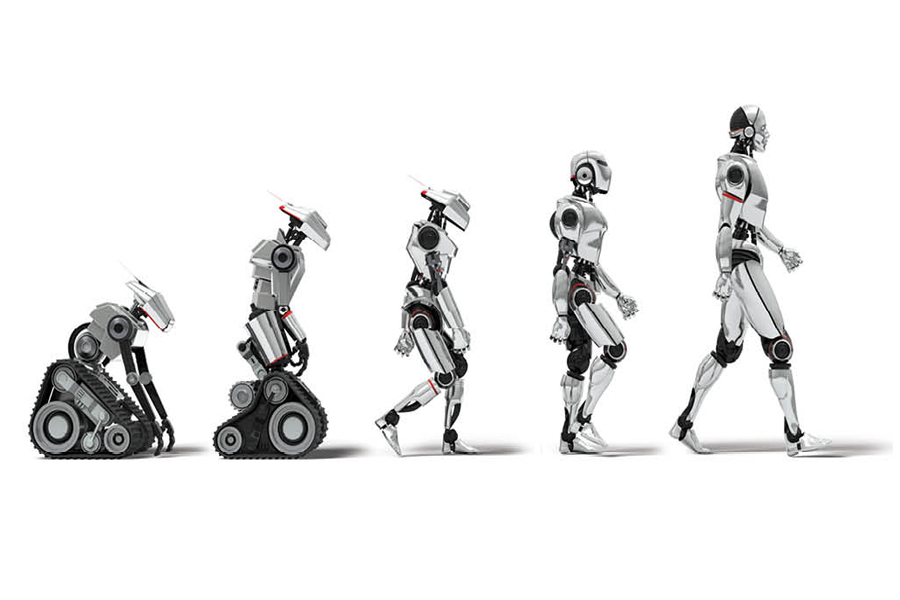The field of robotics has undergone significant advancements in recent years, with robots being used in various industries such as manufacturing, healthcare, and transportation. One of the key aspects of robotics is mobility, which refers to the ability of a robot to move around and perform tasks in different environments. Robot mobility is a crucial aspect of robotics, as it enables robots to interact with their surroundings and perform tasks that would be difficult or impossible for humans.

Types of Robot Mobility
There are several types of robot mobility, including:
- Wheeled Mobility: This type of mobility involves the use of wheels to move around. Wheeled robots are commonly used in indoor environments, such as factories and warehouses, where the terrain is flat and even.
- Legged Mobility: This type of mobility involves the use of legs to move around. Legged robots are commonly used in outdoor environments, such as rough terrain, where wheels may not be effective.
- Flying Mobility: This type of mobility involves the use of wings or rotors to move around. Flying robots, also known as drones, are commonly used in applications such as aerial photography and surveying.
- Swimming Mobility: This type of mobility involves the use of fins or propellers to move around in water. Swimming robots are commonly used in applications such as underwater exploration and inspection.
Benefits of Robot Mobility
Robot mobility offers several benefits, including:
- Increased Efficiency: Robots can move around and perform tasks more quickly and efficiently than humans, which can lead to increased productivity and reduced labor costs.
- Improved Safety: Robots can perform tasks in hazardous environments, such as nuclear power plants or disaster zones, without putting humans at risk.
- Enhanced Flexibility: Robots can be designed to perform a variety of tasks, from assembly and inspection to cleaning and maintenance.
- Reduced Labor Costs: Robots can perform tasks autonomously, which can reduce labor costs and improve overall efficiency.
Challenges of Robot Mobility
Despite the benefits of robot mobility, there are several challenges that must be addressed, including:
- Terrain Navigation: Robots must be able to navigate different types of terrain, including uneven and slippery surfaces.
- Obstacle Avoidance: Robots must be able to detect and avoid obstacles, such as people and objects, in their path.
- Localization: Robots must be able to determine their location and orientation in space, which can be challenging in complex environments.
- Communication: Robots must be able to communicate with humans and other robots, which can be challenging in environments with limited connectivity.
Applications of Robot Mobility
Robot mobility has a wide range of applications, including:
- Manufacturing: Robots are used in manufacturing to perform tasks such as assembly, inspection, and material handling.
- Healthcare: Robots are used in healthcare to perform tasks such as surgery, patient care, and rehabilitation.
- Transportation: Robots are used in transportation to perform tasks such as package delivery, traffic management, and autonomous vehicles.
- Agriculture: Robots are used in agriculture to perform tasks such as crop monitoring, harvesting, and livestock management.
Future of Robot Mobility
The future of robot mobility is exciting and rapidly evolving. Advances in technologies such as artificial intelligence, computer vision, and sensor systems are enabling robots to move around and perform tasks with greater ease and efficiency. Some of the trends that are expected to shape the future of robot mobility include:
- Autonomy: Robots are expected to become more autonomous, with the ability to make decisions and perform tasks without human intervention.
- Collaboration: Robots are expected to work more closely with humans, with the ability to communicate and coordinate tasks.
- Cloud Robotics: Robots are expected to use cloud computing to access and process large amounts of data, which will enable them to perform more complex tasks.
- Cyber-Physical Systems: Robots are expected to be integrated with cyber-physical systems, which will enable them to interact with and control physical systems.
FAQ
- What is robot mobility?
Robot mobility refers to the ability of a robot to move around and perform tasks in different environments. - What are the types of robot mobility?
The types of robot mobility include wheeled mobility, legged mobility, flying mobility, and swimming mobility. - What are the benefits of robot mobility?
The benefits of robot mobility include increased efficiency, improved safety, enhanced flexibility, and reduced labor costs. - What are the challenges of robot mobility?
The challenges of robot mobility include terrain navigation, obstacle avoidance, localization, and communication. - What are the applications of robot mobility?
The applications of robot mobility include manufacturing, healthcare, transportation, and agriculture. - What is the future of robot mobility?
The future of robot mobility is expected to be shaped by advances in technologies such as artificial intelligence, computer vision, and sensor systems, and trends such as autonomy, collaboration, cloud robotics, and cyber-physical systems.
Conclusion
Robot mobility is a crucial aspect of robotics, enabling robots to interact with their surroundings and perform tasks that would be difficult or impossible for humans. With its various types and benefits, robot mobility has a wide range of applications across industries. However, it also poses challenges that must be addressed, such as terrain navigation, obstacle avoidance, localization, and communication. As technology continues to advance, the future of robot mobility is expected to be shaped by trends such as autonomy, collaboration, cloud robotics, and cyber-physical systems. As we move forward, it is essential to continue researching and developing robot mobility technologies to unlock their full potential and transform industries and society. With its vast potential, robot mobility is poised to revolutionize the way we live and work, and its impact will be felt for generations to come.
Closure
Thus, we hope this article has provided valuable insights into Robot Mobility: The Future of Robotics. We hope you find this article informative and beneficial. See you in our next article!
